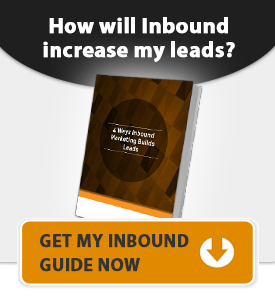“I have tried implementing inbound marketing myself in my company, but I’m just not getting the results I anticipated. What am I missing?”
Don’t worry, you are not alone. According to a survey by Ascend2, 46% of marketers surveyed say that the lack of an effective strategy and the creation of content are the most challenging obstacles to reaching the next level of inbound marketing performance. So what’s the magic to results?
Benjamin Franklin had the answer figured out a long time ago: “If you fail to plan, you are planning to fail!”
Lack of planning is the number one area I see businesses miss the mark. An assumption is made that if I do a little social media here, an email or two there and maybe focus on some key words, the leads will come. That couldn’t be further from the truth. A successful inbound marketing strategy is like a puzzle. There are many pieces that need to fit into just the right spot to complete the picture, and this takes a great deal of thought and planning. The benefit of planning is that when you strategically plan, you not only achieve results, you also significantly lower the cost of your lead acquisition as well.
5 Inbound Marketing Planning Steps
You wouldn’t go on vacation without planning a trip, would you? No. You’d spend time researching where you want to go, the best place to stay, fantastic food choices and activities that you enjoy and, of course, the plan for getting there whether it’s by plane, train or car. Approach your inbound marketing strategy in the same fashion. Let’s look at the 5 key steps to effective planning:
1. Research
Understanding the online positioning of your company and your competitors is important in order to develop a strategy to hit your goals. A few things to consider:
- What are your SMART goals? Do you want to increase organic traffic? Online leads? Brand awareness?
- What is your customer acquisition cost and your customer lifetime value?
- What are the features and benefits of your services compared to your competitors?
- Who is your ideal target audience (persona)? What are their pain points? How does your product or service solve their pain?
- Is your website responsive and mobile friendly? What is your SEO score?
- What does your social influence and engagement look like? The number of followers isn’t important, the quality of followers is.
- What organic words are your visitors using to find you? How does that compare to your competition?
- Have you conducted a comprehensive keyword research?
- What story does a content audit tell you?
- What resources, time and knowledge do you have within the organization to support a results-oriented inbound marketing program?
2. Attract
Research helps identify your gaps and opportunities in your strategy so that you can gain a competitive advantage and attract visitors. Attraction is about using the right mix of digital strategies with the right helpful and informational content to ensure that visitors find you and are pulled into your sales funnel because they value what you have to offer. Are the following strategies effectively working for you now?
- Your website is easy to navigate and makes it easy to do business with you.
- Blogging a minimum of once per week with compelling information your visitors care about.
- SEO strategy--both on- and off-page elements.
- Social media using the right channels at the right time with the right message.
- Press releases shared with information that your audience cares about.
- Content, content, content! Is your content about you promotional or is it focused on the pain points of your target audience? Effective content must be researched, well-written, appropriate for your audience and positions your business as the leading expert that customers trust.
3. Convert to Leads
Your content has attracted people to your website, but the question that remains is simple: will they convert to leads? Do you have the following conversion paths in place?
- A compelling call-to-action that the visitor is willing to exchange their name and email address for.
- A landing page that clearly outlines the call-to-action benefits and provides a form to capture information from the visitor.
- A thank you page that the visitor receives acknowledging their request and providing a secondary offer that drives them deeper into the sales funnel.
4. Nurture to Close
Every business has a different sales cycle length which is determined by the target audience (persona). Once you’ve converted the lead, you can’t assume they are ready to purchase. Just like traditional sales, lead management is a critical aspect of inbound marketing.
- How do you use email to stay in touch with your leads?
- What type of helpful informational content is shared with your leads?
- How frequently do you send emails?
- What does your lead scoring system look like?
- How is your CRM (Customer Relationship Management System) utilized to support lead nurturing?
- At what point is the lead ready to connect with the sales rep?
5. Measure & Refine
You judge your vacation by your experience and you evaluate what you would do differently next time to make your trip better. The same holds true for inbound marketing. Based upon the goals you established:
- Are you able to see changes from month to month?
- Can you identify which tactics are most effective?
- Have you implemented A/B testing strategies?
- Which content is your visitors most attracted to?
- Can you identify which conversion paths are working and which ones aren’t?
- Do you monitor your competitor for online changes?
Moving Forward with an Inbound Plan
Much like a traditional marketing plan can feel overwhelming to develop, execute and manage, so can an inbound strategic plan. The difference is an inbound plan is a continual ongoing viral strategy that requires producing a high-volume of quality content specific to each channel, delivering it to the visitor at the right time and continual measurement of effectiveness to make immediate changes for better results.
Although you may feel frustrated if you initiated your own inbound strategy and you’re not seeing the results you want, don’t give up. It takes many proficient skills to implement and manage an inbound marketing program, from graphic designer, writer, editor, publisher, social media strategist to SEO analyst. Perhaps it’s time to take a fresh look at your existing inbound strategy with your team.
Often the biggest barrier I observe is the lack of understanding of what an effective inbound strategy really is and the lack of internal resources to develop the plan and execute it. If you don’t have the resources to do this in-house, consider partnering with an inbound marketing firm to provide the expertise you need to guide you through developing a strategic inbound plan that attracts visitors, converts visitors to leads and nurtures leads to sales!
What tactics have you found beneficial in your inbound marketing strategy?



